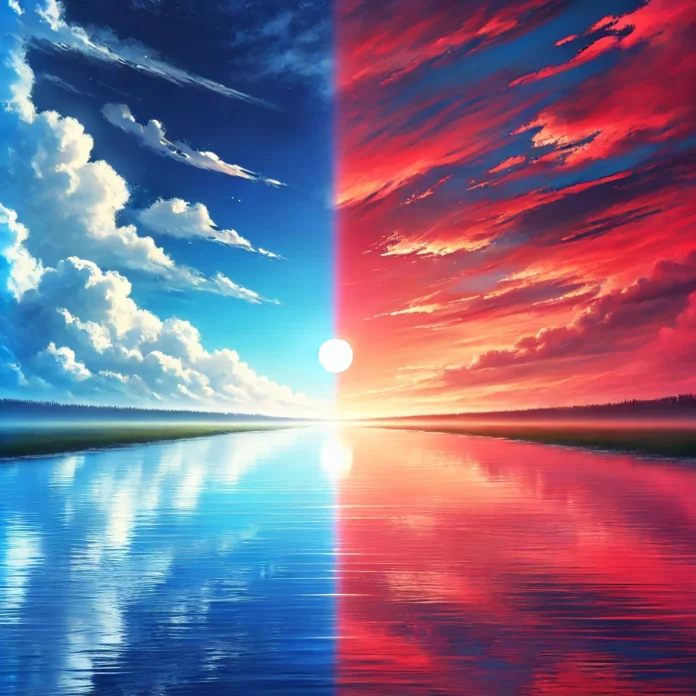Why is the sky blue during the day and red at sunset? It’s one of those questions that seems simple at first glance but actually dives deep into the physics of light. To explain it, we need to talk about how sunlight interacts with our atmosphere in ways you might not expect.
First, let’s break down sunlight. Despite appearing white to our eyes, sunlight is actually made up of a spectrum of colors—every color of the rainbow, from violet and blue to red. This is the same spectrum you see when light passes through a prism, splitting into its various components. But here’s the key: these different colors of light have different wavelengths. Blue and violet light have shorter wavelengths, while red and orange have longer ones.
Now, when sunlight enters Earth’s atmosphere, it doesn’t just pass straight through. It bumps into countless molecules of air—oxygen, nitrogen, and other tiny particles floating around. This interaction causes a process called Rayleigh scattering, where shorter wavelengths of light are scattered in all directions by the gases in the atmosphere. Among these short wavelengths, blue light is scattered much more efficiently than others. Even though violet light is scattered even more, our eyes are less sensitive to violet, and much of it gets absorbed by the upper atmosphere. So, the sky appears predominantly blue to us during the day because the atmosphere scatters blue light across the entire sky.
This effect is most noticeable when the sun is high overhead. At this point, sunlight is taking the shortest path through the atmosphere, allowing blue light to dominate our vision. But what happens as the day progresses and the sun starts to set?
As the sun gets lower on the horizon, the angle at which sunlight hits the Earth changes dramatically. The light now has to pass through a much thicker slice of the atmosphere to reach your eyes, sometimes over 10 times the distance it traveled at noon. This greater thickness means that much more of the shorter wavelengths, like blue and violet, are scattered out of your line of sight altogether before they even reach you. What’s left are the longer wavelengths—reds, oranges, and sometimes pinks—which aren’t scattered as much and can travel farther through the atmosphere.
That’s why, at sunset, the sky around the sun turns these warmer, fiery shades. It’s also the same reason why the sun itself appears redder at this time of day. The light coming directly from the sun has had all its blue scattered away, leaving behind only those deep, glowing reds.
The richness of these sunset colors can also be affected by other factors. For instance, if there are more particles in the air—like dust, smoke, or pollution—this scattering effect becomes even more pronounced, intensifying the reds and oranges. In fact, some of the most vivid sunsets occur after volcanic eruptions, when ash in the atmosphere scatters light in such a way that entire skies can glow with extraordinary colors for weeks afterward.
Another key factor is the weather. When the air is clearer and drier, the sunset can appear softer and more pastel, while high humidity can make the reds and oranges more vibrant. Locations closer to the equator, where the sun sets more directly and quickly, might also experience different hues than regions farther from the equator where the sunset lingers.
So, when you look up during the day and see a vast, endless blue, it’s not just an aesthetic pleasure—it’s a direct result of light physics at work, with sunlight interacting with the atmosphere in real-time. And as day transitions into night, that blue fades into a palette of oranges and reds, as the sky shifts the light around us, putting on a show that’s been playing since the dawn of time.
In essence, the colors of the sky are a daily reminder of how light, the atmosphere, and our position on Earth come together to create one of the most beautiful natural displays—something as simple as the sky that, when you think about it, is full of complexity. So, the next time you find yourself gazing up at the sky, whether it’s the clear blue of midday or the vibrant hues of dusk, remember: there’s a lot more going on up there than meets the eye.
Vigorous




